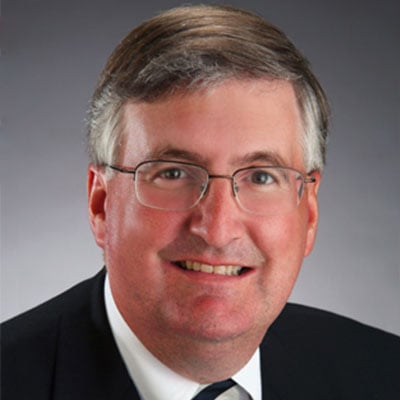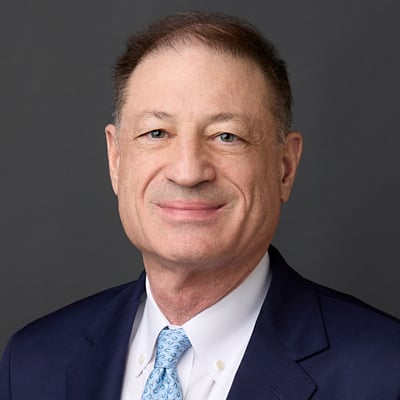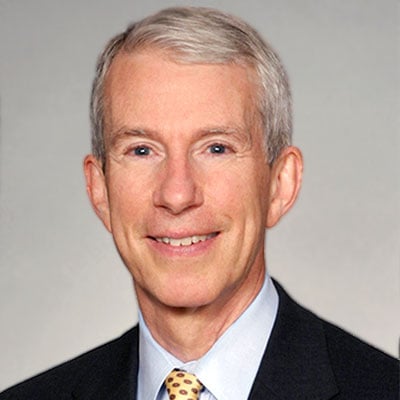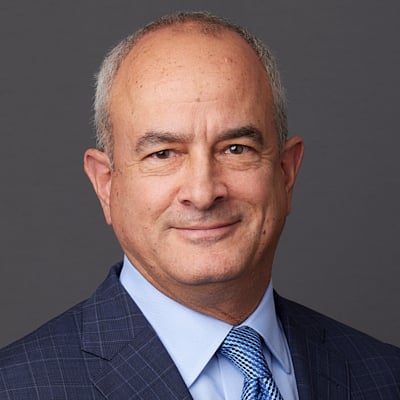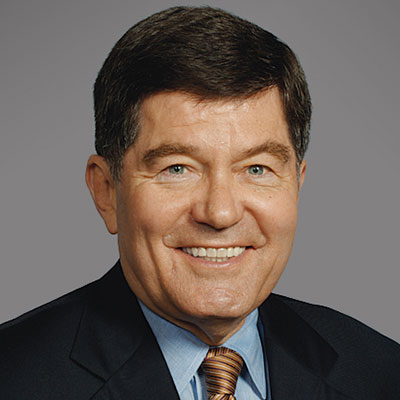Kirkland's Goal is to Bring out the Hammond in Everyone
Even a David Boies has to start somewhere.
For Kirkland & Ellis associates, it's the Kirkland Institute of Trial Advocacy.
Unless an associate is in the midst of a client's trial or has an exceptional excuse, he or she must spend one weekend per year litigating a mock trial through KITA, which also includes deposition training and a legal writing seminar.
Partners say KITA underscores the firm's commitment to developing trial lawyers and has become a recruiting tool.
The 2001 KITA for 108 first- through third-year associates began on a Wednesday afternoon in February in the Indiana Room of the Aon Center, where Kirkland lawyers from New York, Washington and Los Angeles joined their Chicago peers.
Some 67 senior associates met in Washington in early March for their own KITA trial.
The firm paid more than $100,000 to run Chicago KITA, a figure that excludes the time cost of attorneys' lost billable hours, said Valarie Howard, attorney training coordinator for Kirkland.
Teams of junior associates, working in twos or threes, represented one of three clients in a mock trial based on the real-life 1992 Chicago flood: Consolidated Department Stores, City of Nita and Northwest Dredge & Dock.
In the hypothetical, Northwest contracted with the City of Nita to move wooden pilings that protected the Wells Street bridge. The plaintiffs, Consolidated Department Stores, alleged Northwest punctured the tunnel beneath the Nita River when they moved the pilings, causing a flood that shut down businesses and created substantial structural damage to buildings.
Partners sat as judges; and the firm paid from $75 to $600 each to hire 60 Chicago actors as witnesses and 55 citizens - mostly retirees - as jurors.
Munching on pretzels and chips, associates chatted and sized up their "co-counsel" from the different Kirkland offices. Others flipped through the trial schedule to see who would be their co-counsel.
Steven D. McCormick, a Chicago partner who has been lead trial counsel for General Motors, Brown & Williamson and Colgate-Palmolive, welcomed the associates to the session.
"The goal ...... is how to prepare for trial," McCormick said. "This is the most challenging thing we are going to ask you to do in KITA. This also comes the closest to the heart and soul of our professional purpose as trial lawyers. It's just so easy to sit in our offices with a bottle of water and be deeply enmeshed in our brief. It's a lot more comfortable. We need to force ourselves to get up on our feet and speak to an audience with a persuasive point."
Partners Walter Lancaster and Brian Sieve demonstrated two approaches to opening statements.
Sieve's opening, on behalf of Consolidated Department Stores, featured a glitzy computer presentation.
Lancaster, defending Northwest Dredge & Dock, opted for a straightforward, low-tech pitch, depending on handwritten overhead transparencies, which would be the only technology available to the associates during their two-day trials.
Some of the associates reacted like students in other American classrooms: Doodling and yawning interrupted attention spans. But not when the real world summoned. As Lancaster spoke, an associate whispered into his cell phone about a brief that was due.
After the demonstration, partners Roger Heaton and James Mutchnik, both former assistant U.S. attorneys, joined Sieve and Lancaster for a panel discussion about opening statements, moderated by partner Russell Levine.
One basic piece of advice: Counsel should introduce himself or herself to the jury and say who s/he represents.
"Even after they have sat through voir dire, jurors don't know the players," Heaton said.
Talking without notes and conveying a sense of understanding are crucial, he added.
To prepare opening statements, Heaton constructs an outline first. After reminding jurors who he is and whom he represents, Heaton offers an affirmative statement of the evidence, which he delivers either chronologically or by subject matter; and he then prepares the jury for what opposing counsel will say.
"It's important to address your weaknesses," Heaton said.
Finally, he asks the jury for what he wants.
"Understatement in an opening can be the most effective thing to do if you have the cards," he added. "Also, I have always practiced my opening statements to friends and family to see if it was coherent."
Day two
The next morning, participants returned to the Aon Center for a communication skills program given by Brian Johnson, a consultant with Trapezium Communications of St. Paul, Minn.; and Paul J. Zwier II, professor of law and director of the Center for Advocacy at the University of Tennessee College of Law.
The firm paid Johnson and Zwier $18,000 for speaking to both Chicago and Washington KITA groups, Howard said.
The duo covered basic presentation skills: hand gestures, posture, tone of voice, speaking pace.
They also offered suggestions on parts of the mock trial.
"Opening statements are the first time the jury is hearing a conversation about this case," Zwier said. "It's probably too early for much drama. This is an opportunity to tell the story from the viewpoint of your client. Use a person-to-person, not oratory, voice. You want to give the jury a chance to get a read on you."
"Cut to the chase: It started with a drip, and it became a flood," Johnson suggested. He told the associates to think of their outlines and notes as speaking notes.
"Don't write small," Johnson said. "Get a big, fat pen and write twice as large as normal."
Where do you mention your bad stuff?
"In the middle, when people aren't listening," Zwier said. "Get rid of some of those bad facts there."
For cross-examination, Zwier recommended asking questions with seven words or less.
"Make them factual, not conclusions; take out the adverbs so you don't quarrel with the witness," he said.
Johnson's slogan? Cross should not be cross.
"Don't be cross," Johnson said. "Generally, witnesses are not folks radiating evil."
The direct
Direct examination, they said, is a trickier endeavor.
"It can be deadly dull, especially the big-firm approach to litigation," Zwier said. He added, joking: "Oh, those Kirkland lawyers bring in 15 experts to make one point."
"You know the answers, so it makes it difficult," Johnson said. "Put some flavor in your voice, some curiosity. Sound like you care, or the jury will not."
Throughout the day, Johnson and Zwier conducted 20-minute coaching sessions with individual associates, each of whom spoke for five minutes and then were critiqued.
The coaching sessions worked better for litigators assigned opening or closing statements, said Rana Janney, a first-year Chicago Kirkland associate assigned to do expert and cross-examinations on behalf of Northwest Dredge & Dock.
At trial
On Friday and Saturday, sessions moved to the seventh floor conference center at the Palmer House Hilton for 13 mock trials running simultaneously in various conference rooms.
Associates scurried, checking in with witnesses and strategizing with their co-counsel. Some manned cell phones, keeping up with law firm business.
Bailiffs stood outside the courtrooms, and witnesses huddled around couches near the sign-in desk. One swallowed cough medicine as others studied their lines.
The trials began.
After pretrial conferences, the trials moved to voir dire.
Alex Portales, a Los Angeles associate representing Consolidated Department Stores, asked each of the four jurors a prepared list of questions: Related to any parties in the lawsuit? Any relatives connected to the parties? Have you been affected by the flood? Can you give a fair and impartial evaluation?
Steven Kotarba, a Chicago associate defending the City of Nita, and William Mercer, a New York associate defending Northwest Dredge & Dock, asked similar questions. None of the jurors offered controversial responses. Even if they had, they couldn't have been dismissed in this mock trial.
After Mercer finished, Andrew Running, a Chicago partner playing the role of the judge, critiqued the associates.
"I heard a lot of talk from over here but not much over here," Running said, pointing to the jurors. "You don't really know much about them. How about asking what they read or if they watch any TV shows? You can't ask about their political views, but you can ask their view about the City of Nita. Do they know any aldermen? Have they had any fights with the city? Has the city not picked up their garbage?"
He also told the associates they could ask the general "have you been convicted of a crime other than a minor traffic violation" of the whole panel rather than tediously repeating the question to each juror.
Looking at his watch and seeing they had nearly a half-hour before opening statements were scheduled to begin, Running told the associates to repeat voir dire.
One juror, Elizabeth Bitoy, piped up to say nobody had asked her about her experience with flooding in general.
When Portales started over, he asked Bitoy immediately if she had ever had any problems with flooding.
"Funny you should ask that," Running chirped.
Lessons learned
Next: opening statements.
Learning from her earlier coaching session with Johnson and Zwier, Courtney Holohan, a Chicago associate, shortened her planned introduction and opened fast.
"This is a case that should have been prevented," she said in the courtroom of Judge Roger Taylor, of counsel.
The coaching sessions, however, hadn't eliminated her fondness for the phrase "ladies and gentlemen," which she used a couple of dozen times.
But, glitches and growing pains were expected from all the participants and were most evident stylistically: reading opening statements from note cards, upside-down transparencies on overhead projectors, hands in pockets while speaking.
Holohan ended with a chart on the overhead projector - right side up - that pummeled the defendants.
During the critique of the opening statements, Taylor said if Nita or Northwest counsel had objected to Holohan's chart as argumentative, he would have sustained the objection.
"It would have screwed up her case," Taylor said. "Two-thirds of trial work is getting stuff in, and one-third of trial work is keeping stuff out."
Next, he told Todd Friedman, a New York associate, not to admit he didn't know what Channel 11 was.
"You don't want to get hometowned," Hartley said. "You don't want the juror thinking, I thought he was from New York."
In all the courtrooms, levity occurred. Sometimes intended, sometimes not.
Intended levity came from the actors portraying witnesses. One broke out in an Irish brogue when testifying as Paddy Bauler, borrowing the name of the late 43rd Ward Democratic alderman and assigning it to the fictional city employee fired after the flood.
In another courtroom, Graham Gerst, a Chicago associate, questioned Margaret Clarke, the manager of the Consolidated Department Stores.
Gerst occasionally slipped into what communications consultant Brian Johnson called the "fig leaf position," with his hands clasped in front of his pelvis.
But, Gerst maintained eye contact with the witness and spoke slowly, two things learned from his coaching session.
J. Andrew Langan, a Chicago partner, told Gerst he used good technique by recapping his points when asking follow-up questions.
But, Langan implored the associates to start referring to evidence by specific exhibit numbers.
"It's a pretty handy convention," he said. "I offer exhibit one. It's sort of the Kirkland way of doing things."
Paul Collier, a Chicago associate, cross-examined Dr. Bushel, an expert witness for plaintiff Consolidated Department Stores.
Bushel testified in direct examination that Northwest should have contacted JULIE, an acronym for an organization with information about underground structures, before doing the work.
"Where in the contract does it say that Northwest should call JULIE?" Collier asked with his first question.
Bushel avoided answering the question directly.
Collier persisted, repeating the question after her long evasion.
Afterward, Tony Richardson, a Los Angeles partner, praised Collier for sticking to his guns when confronted with a hostile witness.
"Great start. You got right to it," Richardson said.
Bushel was Consolidated's last witness.
In the same trial, counsel for both Nita and Northwest moved for a directed verdict. Richardson denied the motions; but in the critique, he lauded the associates for handling the directed verdict motions as well as could have been on the law.
Closing statements
Elsewhere, Rachel Perrier began her close for the City of Nita by thanking the jury for their time.
"We're on the home stretch now," she said with a smile. "I think it's fair to say that the issue boils down to willful and wanton conduct. So, what is that standard ...... "
Then she switched gears, changing her plan of attack according to advice from her coaching session.
Originally, she planned to say opposing counsel had mischaracterized the actions by city officials who managed the flood.
Coach Brian Johnson suggested she start instead with something positive about city officials.
Her revised close included arguments that the city was not utterly indifferent to, nor did it have a conscious disregard for, the flood.
Scott Fowkes, a Chicago partner and Perrier's judge, praised her for sticking to the theme that the City of Nita's defense had used throughout the trial.
He pointed out, though, that she spent too much time defending the city and not enough time attacking the other parties.
"Start out attacking, and bury your bad stuff in the middle," Fowkes said.
Waiting for the jury to finish deliberations, Fowkes and associates wrote down what they expected the outcome to be and put $1 each into a pot for the person with the closest guess.
The jury returned a verdict placing 100 percent of the fault with the city. David Sullivan, a Washington associate, won the pot.
"This is in lieu of your first-year bonus," Fowkes said, handing Sullivan $10. "The actual verdict is not as important because this is a learning experience. A year from now, no one will remember the verdicts."
But K&E hopes they remember the lessons.
During the coaching sessions, a black-and-white sketch of legendary trial lawyer Hammond Chaffetz sat on an easel, keeping watch over the associates. The KITA weekend was dedicated to the memory of Chaffetz, who died in January.
"Hammond Chaffetz used to say the only test ought to be how we persuade people," McCormick said. "Fundamentally, all we do is persuade."

